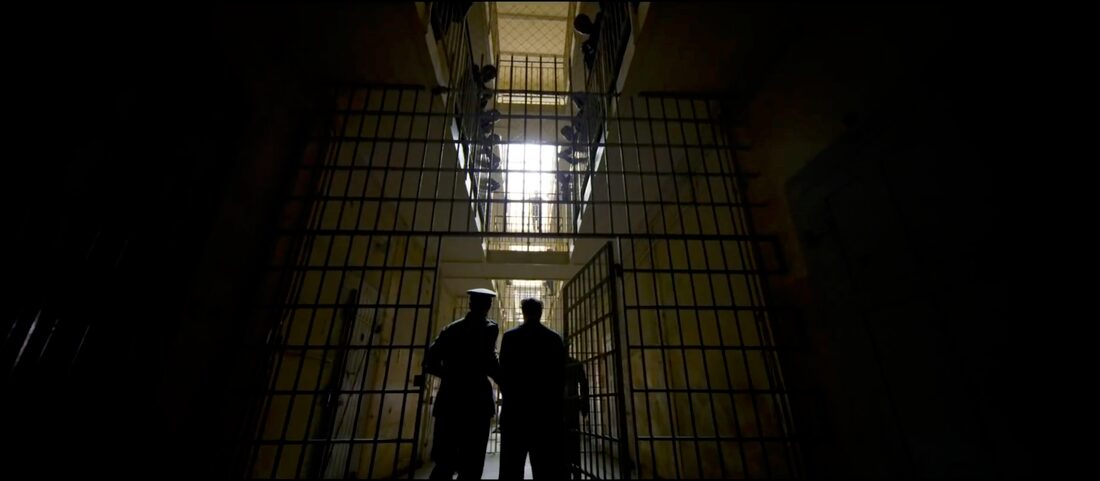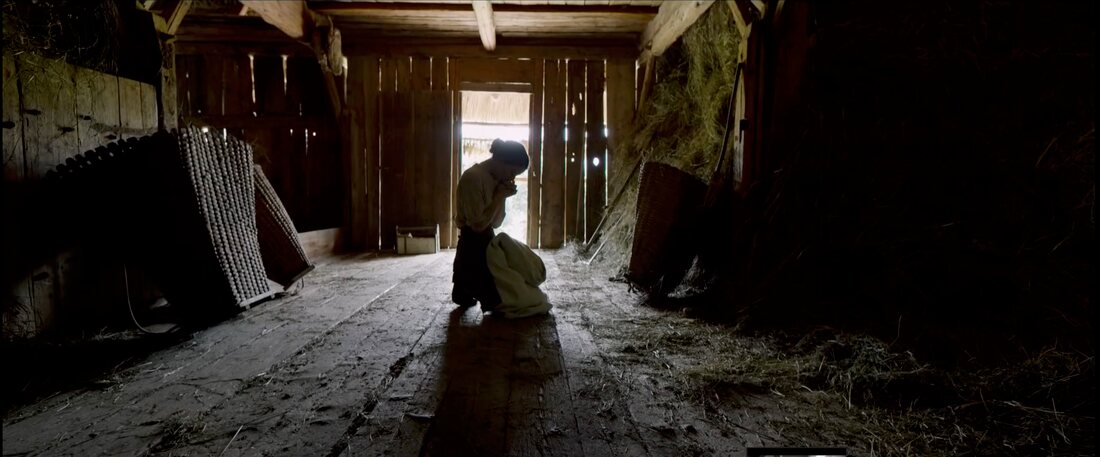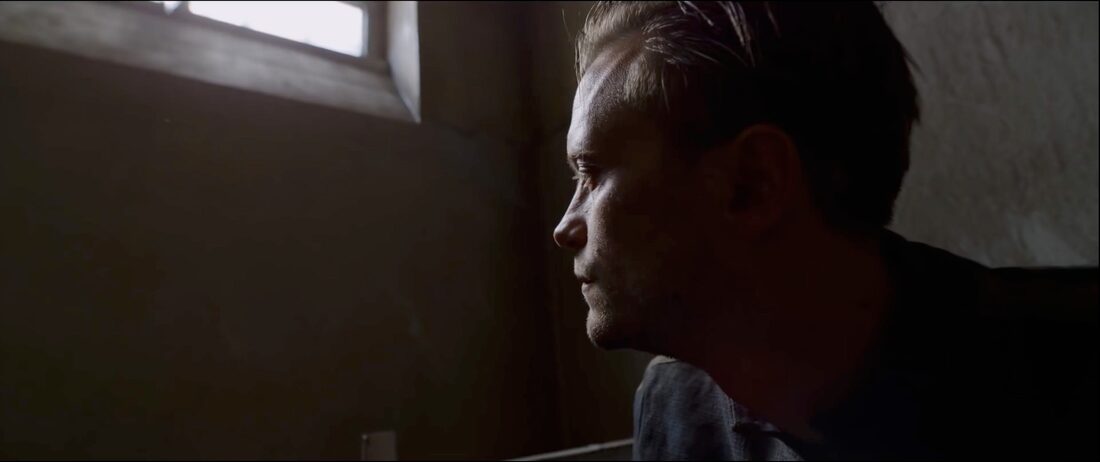|
1. A Hidden Life "Better to suffer injustice than to do it." Synopsis: The real-life story of Franz Jägerstätter, who refused to fight under Nazi Germany, and his wife Fani. Trailer. dir. Terrence Malick. 173m; 2.39:1. [spoilers] It's an impossible choice he faces. Or is it? Upon second viewing and further reflection I'm not sure Franz Jägerstätter, a conscientious objector before the term entered common parlance, feels much indecision at all. Malick's latest recounts the true story of an Austrian farmer who refused to support Hitler's genocide, and who was executed as a result. The film's masterstroke is to withhold Franz's explicit reasons for taking such a stand. Because isn't that one of those decisions that's beyond reason? You either recoil from the thought, repulsed on a gut level and unable to bring yourself to violate your soul to that degree... Or you don't, you're okay with the moral compromise. We can't pretend to know what we would do, because it'd be a supposition based on idle speculation, and nothing more. Complicating his situation is the love he has for his wife and their idyllic life. Fani, also a real-life figure, was instrumental in guiding Franz toward the very character which would ultimately keep them apart– by all accounts she awakened in him an inclination toward goodness, peace and thoughtful intention. She loved Franz because of who he was, who he had become; exactly what he'd be turning his back on if he signed Hitler's oath on the hope of being returned to her (not that a Fascist government during wartime should be particularly trusted to keep such promises). Franz can't go back to Fani because of who he is, and the fact that it's you, yourself, who has to live with your decisions. And she can't encourage him to abandon what she loves most about him– though in a moment of weakness she does, before relenting in anguish– because that's not how love sustains. A moment I missed on first viewing is when Fani grabs Franz with intense frustration, saying, "You're going to do it, aren't you." She's enraged by the thought. Only on a second round would I realize she's referring to him capitulating. Fani doesn't want him to join Hitler's crusade, especially not on the level that matters most– even though this means they will be kept apart, likely forever. His refusal to follow Hitler, in light of her wish, becomes an act of love. Her frustration is not with him but with a world and a God that don't make sense, who are silent in the face of obvious tragedy. Wisely, Malick doesn't answer the questions he raises, though he does include what feels like a first in his oeuvre: a scathing appraisal of Christian hypocrisy by an icon painter that rings as true now as it did in Nazi Germany. Malick lets his images speak for themselves. As in The New World, certain characters promote arguments of hate or apathy using words, using reason– you can reason yourself into any outlook– but there are no grandstanding counter-speeches here. Images cut deeper, and intuition runs more potently than intellectual arguments. Franz's decision is positioned as an instinctual one: with historical hindsight we know the full breadth of Hitler's evil and the notion of refusing to embrace it is more straightforward. But as an Austrian mountain farmer in 1939, Franz would only have an inkling of the inhumanity being done. As we now know so well, his suspicions were more correct than he ever could have guessed. The shock of Franz's fortitude is that he didn't need mountains of traumatic evidence to sustain it. It was as simple as knowing himself enough to know that there was no way, on this Earth, he'd be able to bring himself to kill people. His is less a decision to abandon life as to retain his soul. These two individuals believed they needed to be good, and that staying consistent with the character of their best selves was of greater value than the hatred du jour their contemporaries acquiesed to. They imagined their actions would be unknown and insignificant in the tide of history, and this did not concern them. They cared for other human beings, in a society that had no use for such an outlook, and which actively sought to destroy it. Who looks the fool now? Franz and Fani's actions ended up impacting nearly everyone around them after all, and inspiring generations afterwards, but even if that had never been the case, I don't imagine they would've much cared. Neither lived to see their actions recognized in appreciation; their three daughters would be ostracized by the community for decades afterwards. Those externalities weren't part of their concerns, which had more to do with the interior question of what they'd be able to live with. Conscience is who you are when no one but hindsight is looking. Conscience is what reason cowers before, what reason lacks the tools to truly master. Look at the faces of the other conscientious objectors Franz is imprisoned with. Or at the way Bruno Ganz looks at his hands. At the reflected sun beaming down onto the prison hallway floor, the camera always searching for the light. In the struggle between intuition and reason, intuition never needs to justify itself. [end spoilers] Like its protagonists, A Hidden Life faded from view quickly. It came and went without Oscar nominations, though it did draw sold-out crowds(!) here in Seattle. Fox Searchlight may have enthusiastically bought it last Cannes for $12 million, but it didn’t get booked into as many theatres as Searchlight may have liked because Disney, which owns Fox, overcharged theatres at the same premium tentpole rate it was charging them for their latest Star Wars, an absurd business move for an arthouse feature; of course the chains balked, and everyone lost out. Though it’s a three-hour period piece made with heavy improvisation (Ms. Pachner says below they stopped using the script after about a week), sources say it was made for “high single digits,” which implies the Cannes buy more than recoups investors, though Fox won’t see a return after Disney’s mishandling. The picture itself was funded primarily by four private equity investors who don’t have their names listed in the credits, and who were aware this was unlikely to be financially lucrative, but who rather supported the director as private citizens and fans. Jörg Widmer takes over lensing duties from the trilogy's Emmanuel “Chivo” Lubezki with no meaningful difference in aesthetic, which shouldn’t be a major surprise given that Widmer was Chivo’s lead steadi operator on all their Malick collaborations. The difference here is this is Malick’s first entirely digital production. We’ve finally gotten to the point where digital can generate film-competitive results if treated properly in post; it used to be easy to tell the difference between a digital movie and celluloid, especially when looking at skies and skin tones. That remains the case, except when filmmakers take care to impose tone curves, color spaces, and grain overlays from specific film stocks, as has clearly been done here. It’s a rich, filmlike image with deep blacks and exceptionally competent light-dark latitude. With the attention Malick pays to his visuals, I’m not surprised; and I suspect going digital worked wonders for his process, which involves searching for extemporaneous moments and shooting enormous amounts of footage doing so. Tree of Life and Thin Red Line both resulted from a million feet of film shot– enough for 91 two-hour films each! Much has been made in press materials of the average length of a take during shooting Hidden Life: 28 minutes, impossible with film. Explore the links below for stories of the actors doing farm labor for 40-minute takes. If it looks they know what they’re doing on screen, it’s because that is what they’re doing. The actors also got texts every morning from Kierkegaard, Nietzsche, psalms from the bible, and more; but they weren’t discussed. As Malick told Sight & Sound in 1975, you can't film philosophy. In keeping with the above advocacy for intuition, they were offered less for intellectual analysis than reflection, a search for a “grounded feeling” with the landscape. Chivo and Malick’s camera rules from The New World carry over mostly intact: all natural light, handheld or steadi only, deep focus, subjective view, and leaning into happy accidents. The 12mm lens, used for the entire film except for a few “long-lens shots” using a still laughably wide 16mm, take “wide angle” to a new level. No other film looks like this one, simply because no other films have been shot with only a 12mm lens, let alone solely natural light. The focus range is massive, and the lens distortion emphasizes depth in the frame; we are there, as we never have been. Lines and composition get emphasized as well, and the camera can read closer to a surface than normal. Note how vast the distance between Franz and the priest seems; or the uncanny uniqueness of the standing soldiers and children, with the unusually close camera; and the diagonal lines in the courtroom. It's the silences in Malick that speak the loudest, the room he allows us to divine meaning from image and soliloquy. The ever-fluid camera tells us all we need to know. He achieved an apex of this abstraction of form with his excellent last three films, with the final third of this so-called 'Modern Life' trilogy* (Song to Song) fine-tuning the possibilities of his brand of pure cinema to their fullest potential. No other contemporary filmmaker has gotten closer to communicating directly with the viewer, freed from the bounds of narrative, plot, structure and even language. This is purity of expression not as a headless avant-garde, but as primal emotional discourse with the viewer. Malick reaches us not with heady intellect but with the vernacular of the soul, and is thus available for engagement with any sensitive viewer, whether or not they are educated or otherwise elite. Malick transcends and even appears to actively resist such statuses, choosing not worldly or learned protagonists but thoughtful ones, reflective people who speak in a voice we reach for, who put to words the ephemera we don't know defines us. ---
*My thoughts on each of the films: 2013's To The Wonder (scroll down); 2016's Knight of Cups (scroll down), and 2017's Song to Song. Behind the scenes
Essays These two longform reviews offer far more than anything I could come up with on my own:
--- Nathan's Films of 2019 Index here.
0 Comments
Leave a Reply. |
Nathan
Archives
July 2024
Categories |














 RSS Feed
RSS Feed
